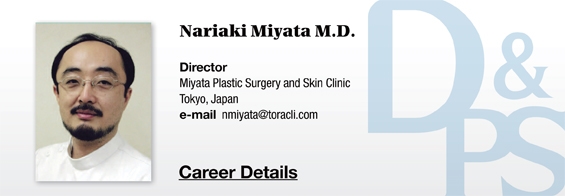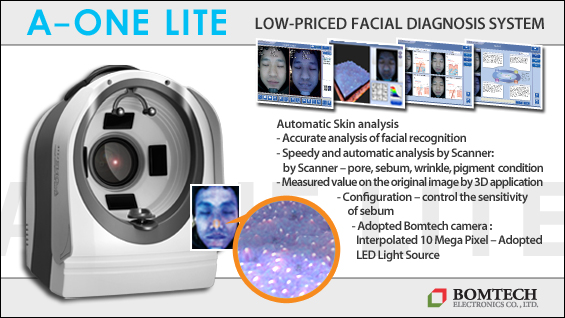
Restylane has been my long personal favorite. Juvederm was temporarily withdrawn from the market in Japan until it obtained the Ministry of Health, Labour and Welfare’s approval. For some time, Restylane was the only HA filler available in the market. Recently, I am also frequently using Juvederm and Teosyal’s RHA series depending on the case.
I use collagen for fine wrinkles. The bovine-derived atelocollagen is produced in Japan. Although it requires pre-treatment allergy screening, it has excellent biocompatibility and does not cause irritation when injected in shallow depths, which are advantages over HA filler. In the past, Zyderm and Cosmoderm (human collagen) were also used but they have been discontinued. Humallagen, human collagen, have been recently introduced. It is expected to increase in popularity due to safety and convenience despite the high cost.
Botulinum toxin is the primary choice in treating expression wrinkles. However, botulinum toxin is much less frequently used in Japan as in Korea. In Japan, it is still used for carefully measured intramuscular injection and rarely combined with other methods or mesotherapy. Personally, I prefer mesobotox technique which uses shallow intradermal injections of botulinum toxin but it is difficult to get patients to agree to the treatment.
Japanese patients are particularly averse to forehead injections of botulinum toxin that lift the eyebrows (I wonder if this is the same in other Asians). Japanese patients are very concerned with preserving the natural appearance of the eyebrows and will never receive injectable treatment again if it drastically changes the position of the eyebrows. Fear spread as complaints about the procedure changing your countenance were found on the internet, which led many patients to reject the botulinum toxin injections all together. It is important to clearly communicate to the patient that not all injectables cause such complications.
Allergan’s Botox was the only botulinum toxin approved by the Ministry of Health, Labour and Welfare and only at 1 vial/50 units per treatment. However, doctors are not importing other brand botulinum toxin products any more, maybe due to aggressive marketing from Allergan. Neuronox or Xeomin are also used sometimes. However, botulinum toxin is categorized as a drug and is heavily regulated, making it difficult for other brands to enter the market. Inotox which was produced in Korea, has not been approved yet but is expected to increase in market share due to its excellent quality.
PRP is also frequently used in wrinkle removal. Japanese people like the idea of using autologous blood. However, starting this year, PRP is now regulated under the new law on rehabilitative medicine. Some doctors are discontinuing the treatment all together due to strict requirements such as submitting a large amount of paperwork to the Ministry of Health, Labour and Welfare. Combination of growth factors (bFGf) is problematic as it can cause hyperplasia but no remedy has been established.
[Advertisement] A-One LITE(Facial Diagnosys System) – Manufacturer: BOMTECH(www.bomtech.net)
I often use PRP in my practice. I combine with with Vbeam (low-output irradiation) in some cases as combination with dye Laser that promotes release of vascular cytokines can enhance the benefits.
Japanese patients are averse to injectable treatments due to the risk of subcutaneous bleeding. In most cases, if I explain the risk of subcutaneous bleeding before treatment, patients take it pretty well when it happens. But some do get very distressed when bruises start to appear. In other countries, both the aesthetic doctors and patients do not take subcutaneous bleeding too seriously, but Japanese patients need to be clearly informed of the risk before treatment.
Korean aesthetic doctors may not consider slight swelling as downtime, but Japanese patients are very sensitive to even very mild complications. In Japan, one should focus more on the safety and downtime than on efficacy.
-To be continued




















